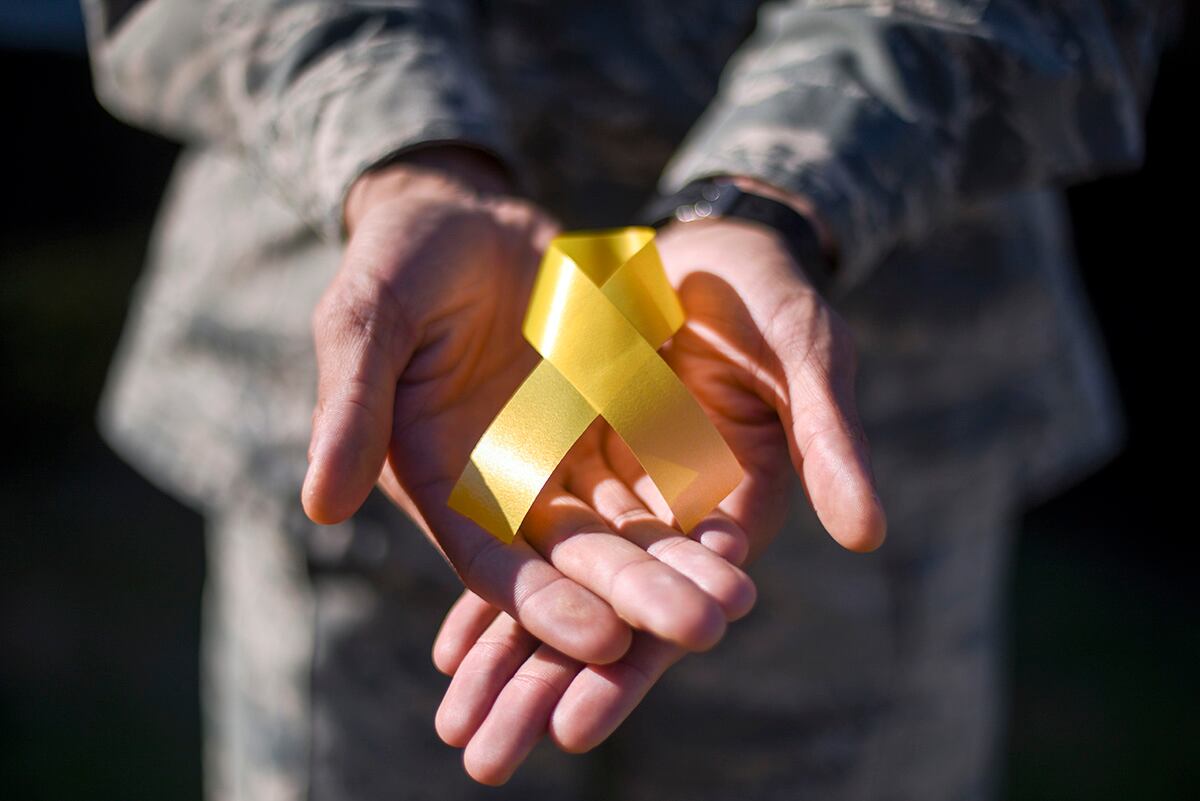We see suicide in the headlines almost every day, most recently with another tragic veteran suicide on a VA medical campus in North Carolina.
Recent CDC data shows national suicide rates are higher than they have been in several generations, and our military and veteran communities have suffered disproportionately. In a letter to commanders last week, Chief of Staff of the Air Force Gen. David L. Goldfein reported that 78 airmen have died by suicide so far this year, a rate alarming enough to spur the service to order an Air Force-wide safety-focused “stand down.” Additionally, the far smaller Marine Corps lost 77 of its own to suicide in 2018, marking a 10-year high. Meanwhile, the Department of Veterans Affairs has reported that veterans from all service branches continue to die by suicide at a rate of roughly 20 every day.
What is going on? Allow me to attempt at least a partial response.
One problem is that there is an excessive focus on suicide prevention. The standard response following a death by suicide or increasing suicide rates is to double down on prevention efforts: reviewing risk factors, teaching warnings signs, and broadcasting crisis hotlines. Focusing solely on prevention may inadvertently stigmatize survivors, peers and providers with subtle messages of guilt, shame and blame. Highlighting what was missed, or should have been caught, may just reinforce the torment they are already wrestling with.
Although prevention efforts are well-meaning and part of the process, they do not take into account the devastating impact that suicide has on those exposed. A 2015 report issued by the National Action Alliance for Suicide Prevention cited research that showed survivors of suicide loss are at increased risk of suicide themselves. A separate study conducted the same year by the National Institute of Mental Health found that soldiers belonging to Army units with five or more suicide attempts in a year faced double the suicide risk. Finally, research out last year by suicidologist Dr. Julie Cerel of the University of Kentucky showed that every suicide impacts at least 135 other people who may, in turn, develop an increased risk for suicide, mental health issues, substance abuse and reclusiveness.
Postvention is a proactive intervention following a suicide that decreases risk and promotes healing for those exposed to the event. It is a strategy that prevents additional negative outcomes, reduces risk and promotes readiness by stabilizing those individuals and organizations exposed.
The Tragedy Assistance Program for Survivors (TAPS) is a Washington, D.C.-based nonprofit that provides comprehensive peer support to grieving military families, including those bereaved by suicide loss. TAPS is leading the way in a national call to action to do better in responding to suicide, in particular by codifying postvention as a standard industry practice. The TAPS Suicide Postvention Model of Support has become recognized as a field-leading best practice in caring for survivors of suicide loss.
The most critical part of that model is stabilization. Suicides are traumatic events for everyone, but especially for those who witness the deaths, discover the bodies, or provide cleanup at the scenes. According to the 2017 Department of Defense Suicide Event Report (or DODSER), approximately 76 percent of military suicides occurred either in the home, the barracks, a friend’s house or the workplace. This statistic highlights how many of our family members and service members are exposed to significant trauma, which can complicate grief and exacerbate existing mental and behavioral health issues in survivors. Thus, the first task is to identify and refer people exposed to trauma to care, an essential component of decreasing future risk.
The second task is to identify and address suicide-specific issues that may interfere with a healthy grieving process. People closest to suicide victims regularly ask, “Why did this happen?” and then conclude that they could have or should have done something to stop it. Other people who had recently interacted with the deceased — friends, peers, co-workers, clinicians, receptionists, doormen, janitors — will invariably wonder whether they missed something or could have done more. Suicide is a multi-factored event and not the fault of survivors; however, it takes some support and processing to accept this notion.
Task three is to address risk, including safely talking about suicide. Suicide attempt survivors frequently report that in their darkest hours, they are desperate to find hope and are listening carefully for a safe pathway to help. How we talk about suicide can increase or decrease risk. For example, if a leader condemns the character of someone who has attempted or completed suicide by calling that person weak or selfish, those who are suffering may hesitate to talk about their own thoughts of suicide for fear they will be judged. Instead, lives can be saved through messages that emphasize how important each person is to the mission, normalize mental health challenges, and offer a roadmap to healing. Sharing personal stories of healing and recovery can provide hope for those most at risk.
We are not going to solve the suicide crisis through traditional prevention efforts alone. Postvention is crucial, and it is time we consider it as a vital part of prevention. If we are to make progress toward halting this tragic trend, we must adopt this strategy and add postvention as a critical component of a comprehensive approach to reducing suicide.
Kim Ruocco, TAPS vice president, suicide postvention and prevention, is an internationally recognized speaker and leader in the field of suicidology who provides suicide prevention education and training to military and civilian audiences. She is also a military widow who lost her husband to suicide in 2005. Marine Maj. John Ruocco was a decorated Cobra helicopter pilot who took his own life while preparing for a second Iraq combat deployment. She holds a bachelor’s degree in human services and a master’s degree in clinical social work and in the past decade has overseen the creation of the TAPS Suicide Postvention Model of Support, a life-saving, best practice approach to care for military suicide loss survivors.




